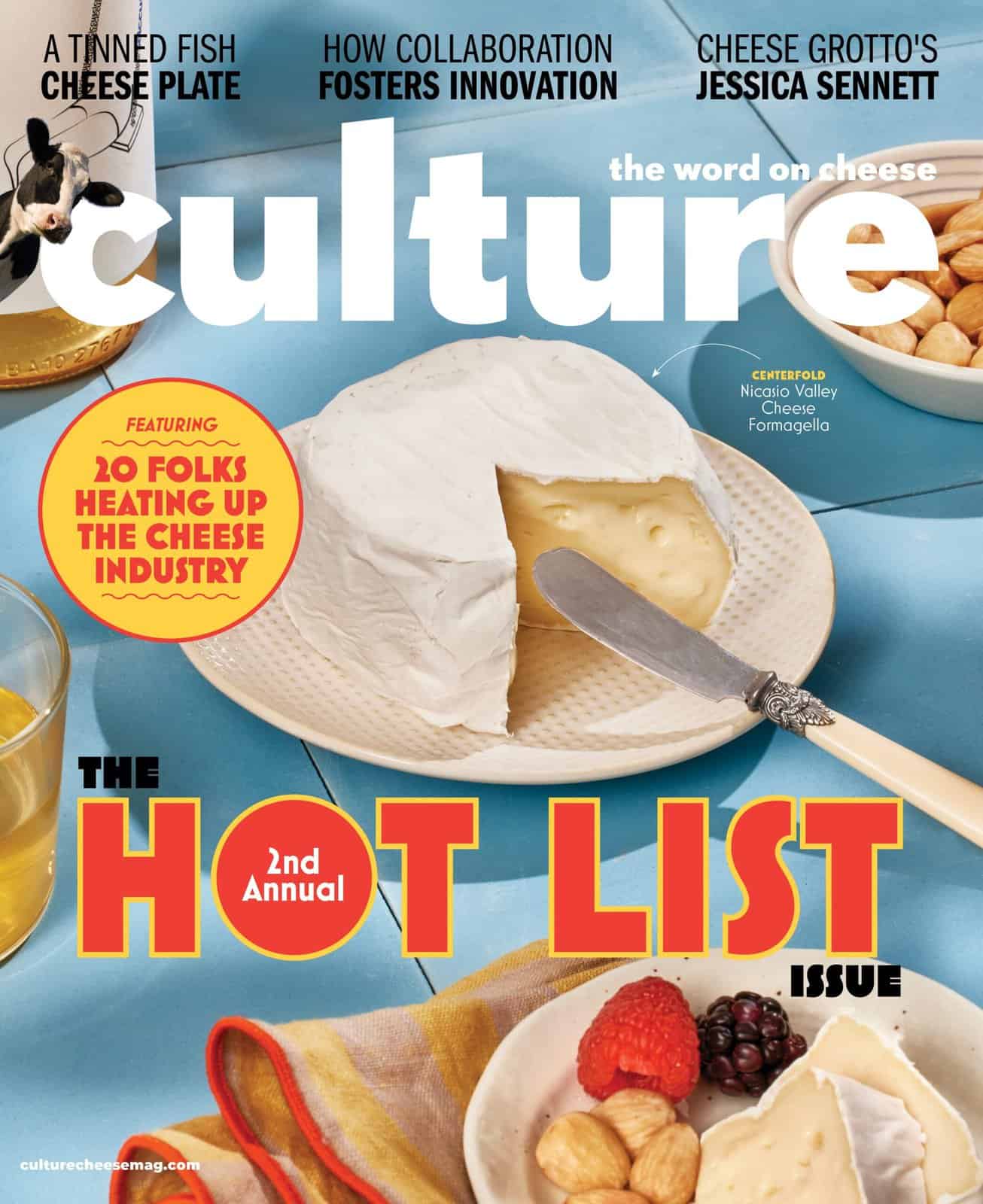
“My wife spreads it on pumpernickel bread with a little strawberry jam and brings it to parties—it’s always the plate we bring home empty,” says Myron Olson, master cheesemaker at the Chalet Cheese Cooperative in Monroe, Wis. “Just don’t tell anyone what it is.”
“It” is Limburger, a cheese with a reputation for stinkiness that scares some people off. Originally inspired by an aromatic washed-rind block made in the Duchy of Limburg (now Belgium, where it’s called Herve), the cheese supported hundreds of factories between New York and Wisconsin in the early 1900s. It was a staple in taverns, spread on dark bread with a thick slice of onion and washed down with beer. Today, the foil-wrapped bricks are made solely at the 133-year-old Chalet Cooperative, where Olson has worked since 1970.
Why the odiferous rectangle fell out of favor has as much to do with changing tastes as it does with xenophobia toward the immigrants who relished it in the early 19th century. Yet leave the name out of it and Limburger holds its own alongside other domestic artisan cheeses; at Chalet, all the milk is local, supplied by 16 dairy farmers within the county, and the culture Olson uses dates to 1911. It’s as close to an American heritage cheese as any.
And if you keep it not quite as long as the beer-drinking, tavern-going immigrants of the early 19th century, you’ll find it’s a worthy companion to a glass of wine. Like Munster, Taleggio, Époisses, and Jasper Hill Farm Winnimere—all widely praised wine companions—Limburger depends on Brevibacterium linens for its moist, ruddy rind and sweet, meaty funk, and it gets stronger as it ages. “From start to finish, you have about six months until it’s over the hill,” Olson says. “Most people like it in the middle.” By then, the chalky center is smoothing out, providing a lush texture to cushion the funk, and the flavors are taking on a gentle, earthy complexity. Here are some suggested wine pairings for Limburger at every stage of development.
Try It With:

Lean, Crisp, and Clean
If you crack into a block of Limburger as soon as you get it, it’ll be firm and buttery around the edges and crumbly in the center, with a mild, fruity funk. At this age, it works best with clean, lean whites like dry riesling. There’s just enough fruit to complement the cheese without overwhelming, and enough acidity to cleanse the palate.
Leitz 2016 Rheingau QbA Dragonstone Riesling
Forge Cellars 2016 Finger Lakes Classique Dry Riesling
Fruity and Full
Myron Olson prefers his Limburger with a few months of age, when it’s smooth and fragrant. He also prefers wine over beer, he says. “Wine goes very well with Limburger, especially fruity whites,” he says. The richer texture and deeper funk calls for the sweet-apple notes of a ripe chardonnay, or the tropical tones of a gewurztraminer.
Mossback 2016 Russian River Valley Chardonnay
Pierre Sparr 2016 Alsace Grande Reserve Gewurztraminer

Light and Frisky
Fruity reds work as well as fruity whites, Olson finds, as long as they don’t pack too much alcohol or richness. Look for light-handed vintners working in low-impact ways, like farming sustainably and eschewing new oak barrels, which can add flavors that mask a wine’s more delicate details.
Martha Stoumen 2017 California Post Flirtation Red
Gsellmann 2015 Burgenland Blaufränkisch Bio

Round and Berried
Take Olson’s cue and serve ripe Limburger with a red-fruit jam. The preserves sweeten the funk and create a bridge to bigger reds, as long as the wine isn’t too tannic. California zinfandel and Argentine Malbec tend to have soft, smooth tannins that won’t clash with the acidity in the cheese, plus lush red-berry flavors to echo the fruit preserves.
Ravenswood 2015 Napa Valley Dickerson Zinfandel
Bodega Norton 2015 Mendoza Reserva Malbec
Sweet Wines
“The way Limburger got its reputation was that people used to put it in a jar and let it sit there until it would schlump down,” says Olson. “Then they’d spoon it out.” If you opt for this old-school technique, sweet wine may be your only pairing option. The sugars will curb the gamy notes and balance any bitter or acetic edges, while the cheese will keep the wine from becoming cloying. Alsace and Germany excel in examples that have sweetness as well as high acidity, an element that will go far in reviving your palate after each bite.
Jean-Baptiste Adam 2013 Alsace SGN Gewurztraminer
St. Urbans-Hof 2016 Mosel Bockstein Riesling Auslese




